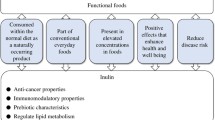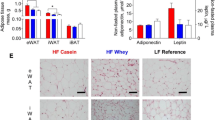Abstract
Nutraceuticals and functional foods are used in veterinary medicine as preventative or supportive treatments for disease and to improve animal health. Although the purported health benefits of nutraceuticals and functional foods in animals is well-documented, understanding the molecular mechanisms involved in the nutritive health benefits and disease outcome on a cellular level is warranted. Proteomics-based techniques are evolving as a promising tool that may provide the scientific knowledge to link diet and disease in nutritional research. The use of proteomics in nutrition research has transformed into the disciplines of nutriproteomics and foodomics. Although more studies are warranted to garner a deeper understanding of the mechanisms responsible for the health benefits of these nutritive substances in animals, nutriproteomics and foodomics applications have offered new insights into the molecular mechanisms of action and changes in protein expression of a variety of nutritive substances.
Access this chapter
Tax calculation will be finalised at checkout
Purchases are for personal use only
Similar content being viewed by others
References
Anderson NL, Anderson NG (2002) The human plasma proteome. Mol Cell Proteomics 1:311–326
Andringa NK, King AL, Eccleston HB et al (2010) Analysis of the liver mitochondrial proteome in response to ethanol and S-adenosylmethionine treatments: novel molecular targets of disease and hepatoprotection. Am J Physiol Gastrointest Liver Physiol 298:G732–G745
Bailey SM, Robinson G, Pinner A et al (2006) S-adenosylmethionine prevents chronic alcohol-induced mitochondrial dysfunction in the rat liver. Am J Physiol Gastrointest Liver Physiol 291:G857–G867
Bauer JE (2011) Therapeutic use of fish oils in companion animals. J Am Med Assoc 239:1441–11451
Bautista AC, Moore CE, Lin Y et al (2015) Hepatopathy following consumption of a commercially available blue-green algae supplement in a dog. BMC Vet Res 11:136. https://doi.org/10.1186/s12917-015-0453-2
Begley M, Gahan CG, Hill C (2005) The interaction between bacteria and bile. FEMS Microbiol Rev 15(8):625–651
Blum K, Meshkin B, Downs BW (2006) DNA based customized nutraceutical “gene therapy” utilizing a genoscore: a hypothesized paradigm shift of a novel approach to the diagnosis, stratification, prognosis and treatment of inflammatory processes in the human. Med Hypotheses 66(5):1008–1018
Bybee SN, Scorza AV, Lappin MR (2011) Effect of the probiotic E. Faecium SF68 on the presence of diarrhea in cats and dogs housed in an animal shelter. J Vet Intern Med 25(4):856–860
Center SA, Warner KL, Erb HN (2002) Liver glutathione concentrations in dogs and cats with naturally-occurring liver disease. Am J Vet Res 63:1187–1197
Cho JG, Geghart CJ, Furrow E et al (2015) Assessment of in vitro oxalate degradation by Lactobacillus species cultured from veterinary probiotics. Am J Vet Res 76(9):801–806
Cotter PD, Hill C (2003) Surviving the acid test: responses of gram-positive bacteria to low pH. Microbiol Mol Biol Rev 67:429–453
Das M, Das S (2016) Identification of cytotoxic mediators and their putative role in the signaling pathways during docosahexaenoic acid (DHA)-induced apoptosis of cancer cells. Apoptosis 21(12):1408–1421
Görg A, Obermaier C, Boguth G et al (2000) The current state of two-dimensional electrophoresis with immobilized pH gradients. Electrophoresis 21:1037–1053
Guo T, Chang L, Xiao Y et al (2015) S-adenosyl-L-methionine for the treatment of chronic liver disease: a systematic review and meta-analysis. PLoS One 10(3):e0122124
Gupta RC (2016) Nutraceuticals in arthritis. In: Gupta RC (ed) Nutraceuticals: efficacy, safety and toxicity. Academic Press/Elsevier, Amsterdam, pp 161–176
Hamdan M, Righetti PG (2002) Modern strategies for protein quantification in proteome analysis: advantages and limitations. Mass Spectrom Rev 21:287–302
Hansen RA, Anderson C, Fettman MJ et al (2011) Menhaden oil administration to dogs treated with radiation for nasal tumors demonstrates lower levels of tissue eicosanoids. Nutr Res 31:929–936
Issaq HJ, Chan KC, Janini GM et al (2005) Multidimensional separation of peptides for effective proteomic analysis. J Chromatogr B 817:35–47
Koskenniemi K, Laakso K, Koponen J et al (2011) Proteomics and transcriptomics characterization of bile stress response in probiotic Lactobacillus rhamnosus GG. Mol Cell Proteomics 10(2). https://doi.org/10.1074/mcp.M110.002741–2
Lee K, Lee H, Pi K et al (2007) The effect of low pH on protein expression by the probiotic bacterium Lactobacillus reuteri. Proteomics 8:1624–1630
Li X, Wang W, Chen J (2017) Recent progress in mass spectrometry proteomics for biomedical research. Sci China Life Sci 60:1093–1114
Matsumoto M, Ohishi H, Benno Y (2004) H+-ATPase activity in Bifidobacterium with special reference to acid tolerance. Int J Food Microbiol 93:109–113
Mudronova D, Karaffova V, Csank T et al (2018) Systemic immune response of gnotobiotic mice infected with porcine circovirus type 2 after administration of Lactobacillus reuteri L26 Biocenol™. Benef Microbes 20:1–12
Navarro SL, White E, Kantor ED et al (2015) Randomized trial of glucosamine and chondroitin supplementation on inflammation and oxidative stress biomarkers and plasma proteomics profiles in healthy humans. PLoS One 10(2):e0117534. https://doi.org/10.1371/journal.pone.0117534
Nwodo UU, Green E, Okoh AI (2012) Bacterial exopolysaccharides: functionality and prospects. Int J Mol Sci 13(11):14002–14015
Ogilvie GK, Fettman MJ, Mallinckrodt CH et al (2000) Effect of fish oil, arginine, and doxorubicin chemotherapy on remission and survival time for dogs with lymphoma: a double-blind, randomized placebo-controlled study. Cancer 88:1916–1928
Pomin VH (2015) Medical gains of chondroitin sulfate upon fucosylation. Curr Med Chem 22(35):4166–4176
Ruas-Madiedo P, Gueimonde M, Arigoni F et al (2009) Bile affects the synthesis of exopolysaccharides by Bifidobacterium animalis. Appl Environ Microbiol 75:1204–1207
Sanchez B, Champonier-Verges MC, Anglade P et al (2005) Proteomic analysis of global changes in protein expression during bile salt exposure of Bifidobacterium longum NCIMB 8809. J Bacteriol 187(16):5799–5808
Schmid RD, Hovda LR (2016) Acute hepatic failure in a dog after xylitol ingestion. J Med Toxicol 12(2):201–205
Schroder PC, Fernandez-Irigoyen J, Bigaud E et al (2012) Proteomic analysis of human hepatoma cells expressing methionine adenosyltransferase I/III, characterization of DDX3X as a target of S-adenosylmethionine. J Proteomics 75:2855–2868
Sebbag L, Smee N, van der Merwe D et al (2013) Liver failure in a dog following suspected ingestion of blue-green algae (Microcystis spp.): a case report and review of the toxin. J Am Anim Hosp Assoc 49(5):342–346
Solano-Aguilar G, Shea-Donahue T, Madden KB et al (2018) Bifidobacterium animalis subspecies lactis modulates the local immune response and glucose uptake in the small intestine of juvenile pigs infected with the parasitic nematode Ascaris suum. Gut Microbes 9(5):422–436. https://doi.org/10.1080/19490976.2018.1460014
Vandeweerd JM, Coisnon C, Clegg P et al (2012) Systematic review of efficacy of nutraceuticals to alleviate clinical signs of osteoarthritis. J Vet Intern Med 26:448–456
Wallace KP, Center SA, Hickford FH et al (2002) S-adenosyl-L-methionine (SAMe) for the treatment of acetaminophen toxicity in a dog. J Am Anim Hosp Assoc 38:246–254
Wang J, Ji H, Wang S et al (2018a) Probiotic Lactobacillus plantarum promotes intestinal barrier function by strengthening the epithelium and modulating gut microbiota. Front Microbiol 9:1953. https://doi.org/10.3389/fmicb.2018.01953
Wang J, Zeng Y, Liu H et al (2018b) Swine-derived probiotic Lactobacillus plantarum inhibits growth and adhesion of entertoxicgenic escherichia coli and mediates host defense. Front Microbiol 9:1364. https://doi.org/10.3389/fmicb.2018.01364
Webb CB, Twedt DC, Fettman MJ et al (2003) S-adenosylmethionine (SAMe) in a feline acetaminophen model of oxidative injury. J Feline Med Surg 5:69–75
Zhang X, Fang A, Riley CP et al (2010) Multi-dimensional liquid chromatography in proteomics—a review. Anal Chem Acta 664(2):101–113
Author information
Authors and Affiliations
Corresponding author
Editor information
Editors and Affiliations
Rights and permissions
Copyright information
© 2019 Springer Nature Switzerland AG
About this chapter
Cite this chapter
Wilson-Frank, C. (2019). Proteomics in the Evaluation of Nutraceuticals and Functional Foods. In: Gupta, R., Srivastava, A., Lall, R. (eds) Nutraceuticals in Veterinary Medicine. Springer, Cham. https://doi.org/10.1007/978-3-030-04624-8_52
Download citation
DOI: https://doi.org/10.1007/978-3-030-04624-8_52
Published:
Publisher Name: Springer, Cham
Print ISBN: 978-3-030-04623-1
Online ISBN: 978-3-030-04624-8
eBook Packages: Biomedical and Life SciencesBiomedical and Life Sciences (R0)




